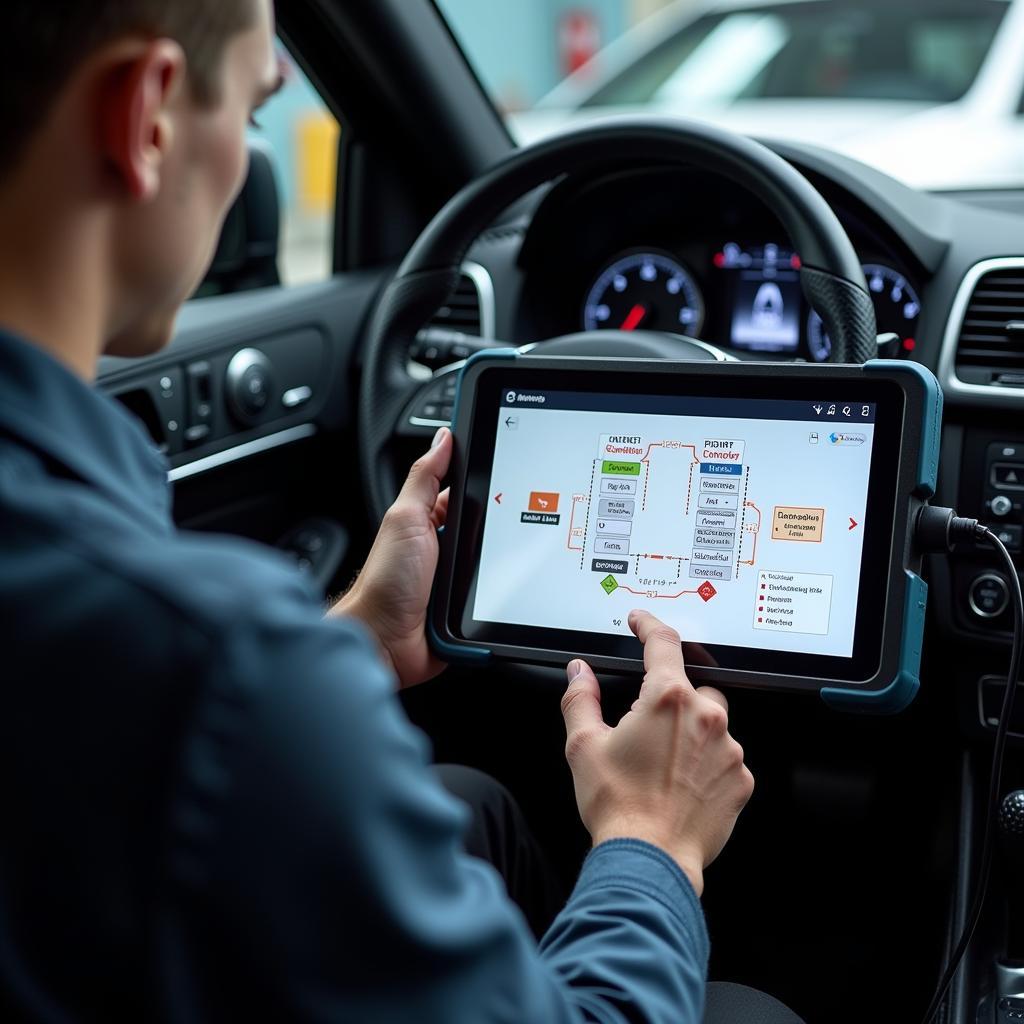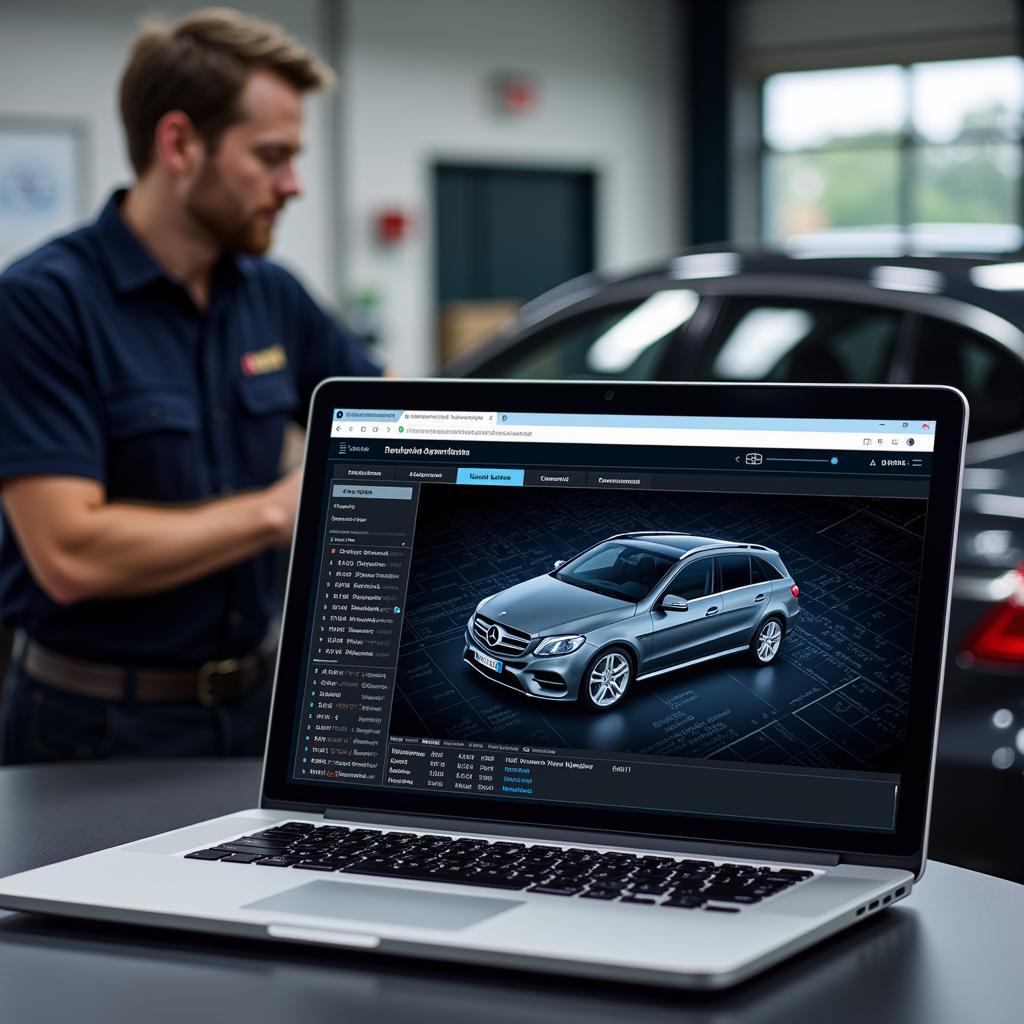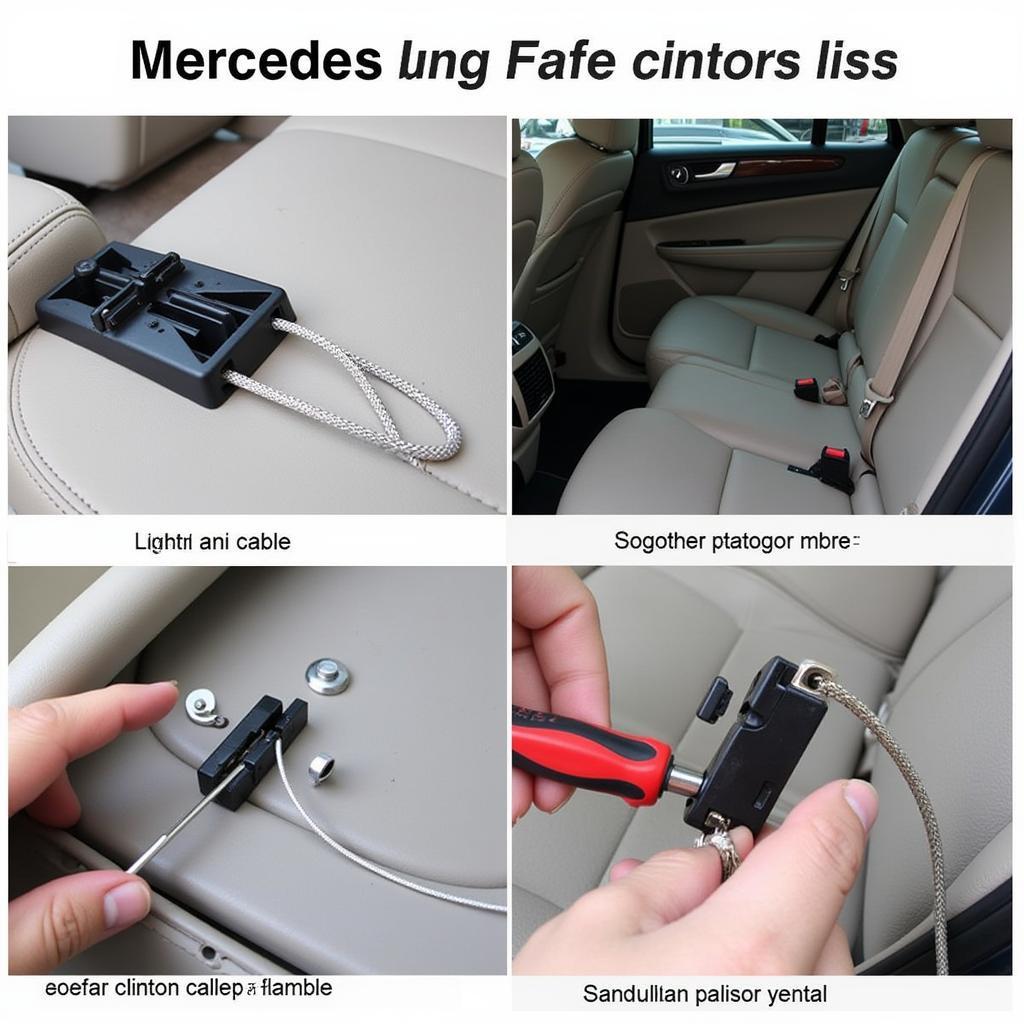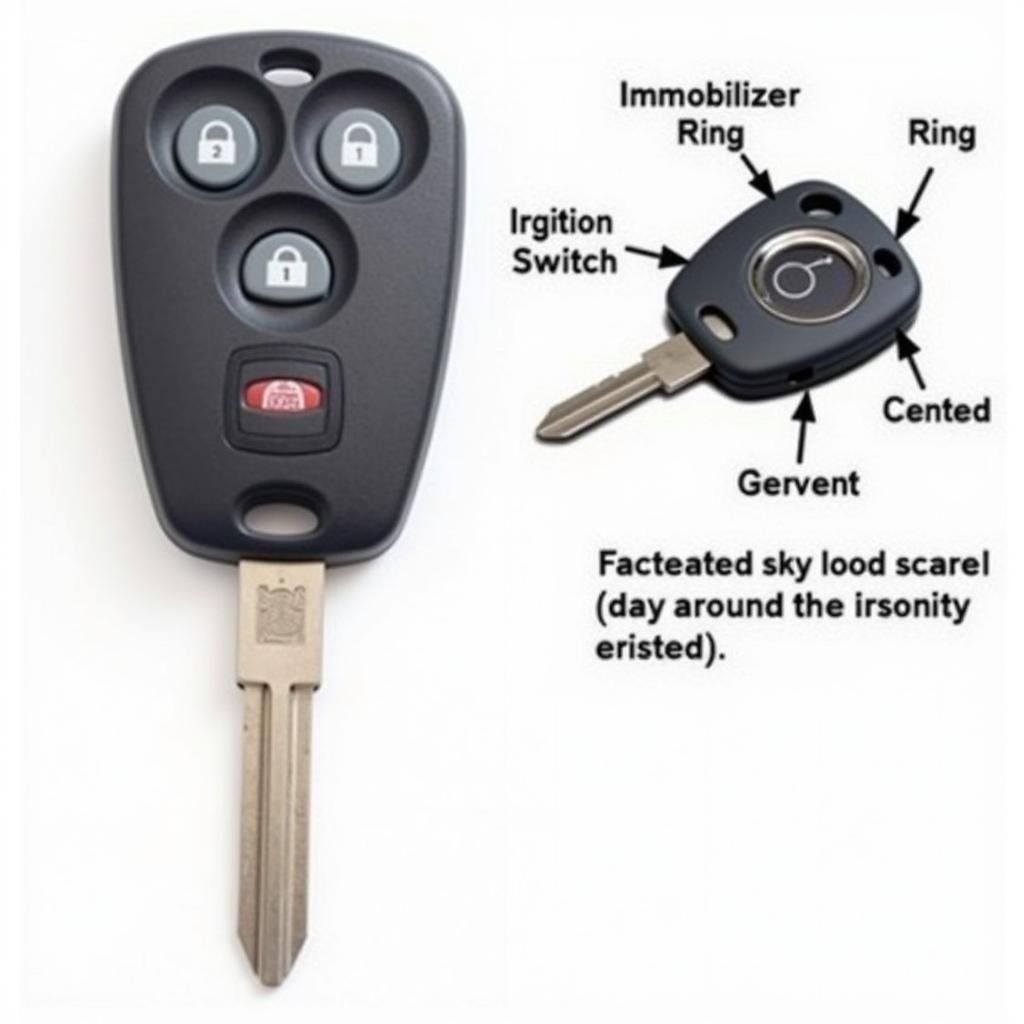When you see the dreaded “Device Detected at Diagnostics Connection” message on your Mercedes, it can be frustrating. This article aims to unravel the mystery behind this error and provide you with actionable solutions to get your Mercedes back on the road. We’ll explore common causes, diagnostic steps, and solutions for this issue.
Understanding the “Device Detected at Diagnostics Connection” Message
This message typically appears when your Mercedes’ onboard diagnostics system (OBD-II) detects an issue with the communication between the diagnostic tool and the vehicle’s control units. This can stem from a variety of problems, ranging from simple connection issues to more complex software or hardware malfunctions.
Common Causes of the Diagnostics Connection Issue
Several factors can trigger the “Device Detected at Diagnostics Connection” message. These include:
- Faulty OBD-II Cable or Adapter: A damaged or incompatible cable can disrupt communication.
- Software Conflicts: Outdated diagnostic software or incompatible versions can cause connection problems.
- Vehicle Communication Issues: Problems within the car’s CAN bus system can prevent proper data exchange.
- Low Battery Voltage: A weak battery can interfere with the diagnostic process.
- Faulty Control Units: In some cases, a malfunctioning control unit in the vehicle can be the root cause.
Troubleshooting Steps for Mercedes Diagnostics Connection Problems
If you encounter this message, here’s a step-by-step guide to help you diagnose and resolve the issue:
- Check the OBD-II Connection: Ensure the cable is securely plugged into both the diagnostic tool and the vehicle’s OBD-II port.
- Verify Cable and Adapter Compatibility: Use a known working OBD-II cable and adapter specifically designed for Mercedes vehicles.
- Check Battery Voltage: Ensure the car’s battery has sufficient voltage. A low battery can disrupt communication.
- Update Diagnostic Software: Make sure you’re using the latest version of your diagnostic software. Outdated software can be incompatible with newer Mercedes models.
- Inspect the OBD-II Port: Check for any physical damage or debris in the OBD-II port.
Advanced Diagnostic Techniques for Stubborn Connection Issues
If the basic troubleshooting steps don’t resolve the problem, you may need to delve deeper.
Using a Different Diagnostic Tool
Sometimes, the issue lies with the diagnostic tool itself. Trying a different, known-working tool can help pinpoint the problem.
Checking the CAN Bus System
A faulty CAN bus system can disrupt communication between the diagnostic tool and the car’s control units. This requires specialized equipment and knowledge to diagnose.
 Diagnosing the CAN Bus System in a Mercedes
Diagnosing the CAN Bus System in a Mercedes
Seeking Professional Help
If you’ve exhausted all other options, it’s best to consult a qualified Mercedes technician. They have the expertise and tools to diagnose and repair complex electrical and software issues.
“A proper diagnosis is crucial before attempting any repairs,” says John Miller, a seasoned automotive electrical systems engineer. “Using the wrong approach can exacerbate the problem and lead to unnecessary expenses.”
Remote Diagnostics and Programming Solutions
In some cases, remote diagnostics and programming can be utilized to resolve software-related connection problems. This involves connecting to the vehicle remotely using specialized software to diagnose and fix issues.
 Remote Diagnostics and Programming on a Mercedes-Benz
Remote Diagnostics and Programming on a Mercedes-Benz
“Remote diagnostics can save valuable time and money, especially for software-related issues,” adds Sarah Chen, a leading expert in automotive software programming. “It allows for quick and efficient troubleshooting without the need for physical access to the vehicle.”
Conclusion: Fixing the “Device Detected at Diagnostics Connection” Issue
The “Device Detected at Diagnostics Connection” message in your Mercedes can be a nuisance, but with a systematic approach, you can often pinpoint and resolve the problem. By following the troubleshooting steps outlined in this article, you can get your Mercedes diagnosed and back on the road. Remember, when in doubt, consulting a qualified Mercedes technician is always the best course of action.
FAQ
-
What does the “Device Detected at Diagnostics Connection” message mean? This message usually indicates a communication problem between your diagnostic tool and your Mercedes.
-
Is it safe to drive my Mercedes with this message displayed? It depends on the underlying cause. If it’s a simple connection issue, it might be safe, but if it’s related to a critical system, it’s best to avoid driving.
-
Can I fix this issue myself? Yes, you can try the basic troubleshooting steps. However, for complex issues, professional help is recommended.
-
How much does it cost to fix this problem? The cost varies depending on the cause and the required repairs.
-
How can I prevent this issue in the future? Using compatible and high-quality diagnostic equipment and keeping your car’s software updated can help prevent this problem.
Common Scenarios for the “Device Detected at Diagnostics Connection” Message:
- Scenario 1: You’re trying to read codes with a generic OBD-II scanner, and the message appears. This might be due to incompatibility. Try a Mercedes-specific scanner.
- Scenario 2: The message appears intermittently. This could suggest a loose connection or a wiring issue.
- Scenario 3: The message appears after a recent software update. This might indicate a software conflict.
Further Reading:
- Diagnosing Mercedes Electrical Problems
- Understanding Your Mercedes OBD-II System
Need assistance? Contact us via Whatsapp: +1 (641) 206-8880, Email: CARDIAGTECH[email protected] Or visit us at: 276 Reock St, City of Orange, NJ 07050, United States. We have a 24/7 customer support team.


